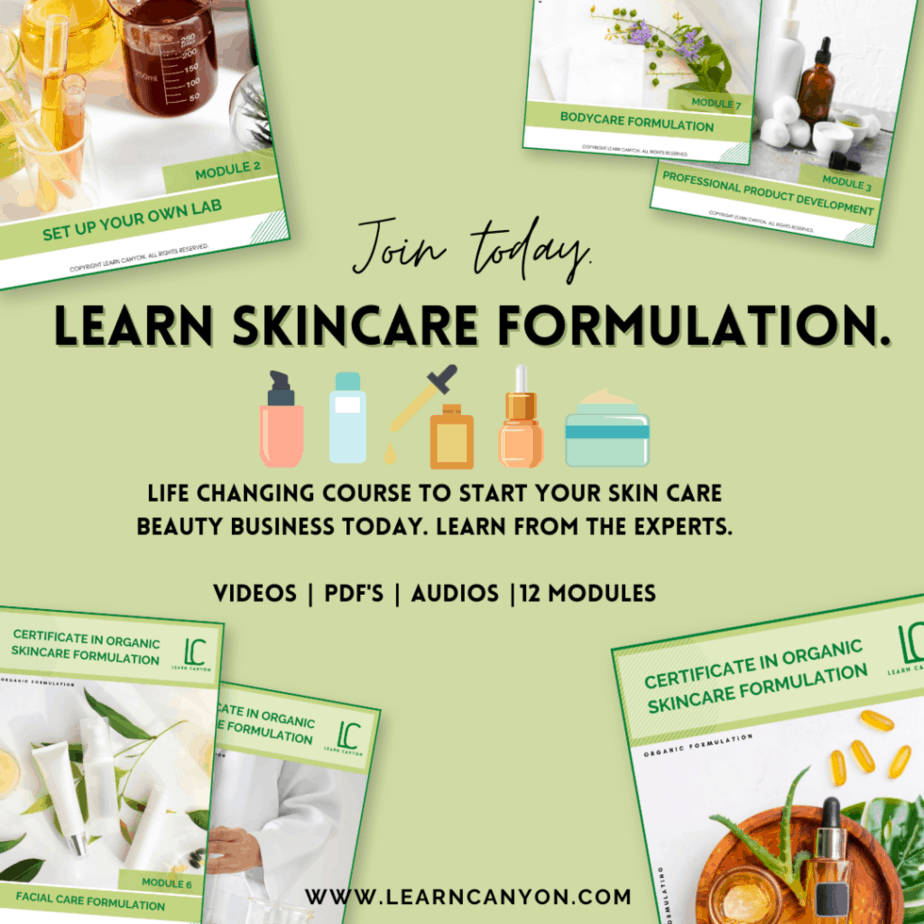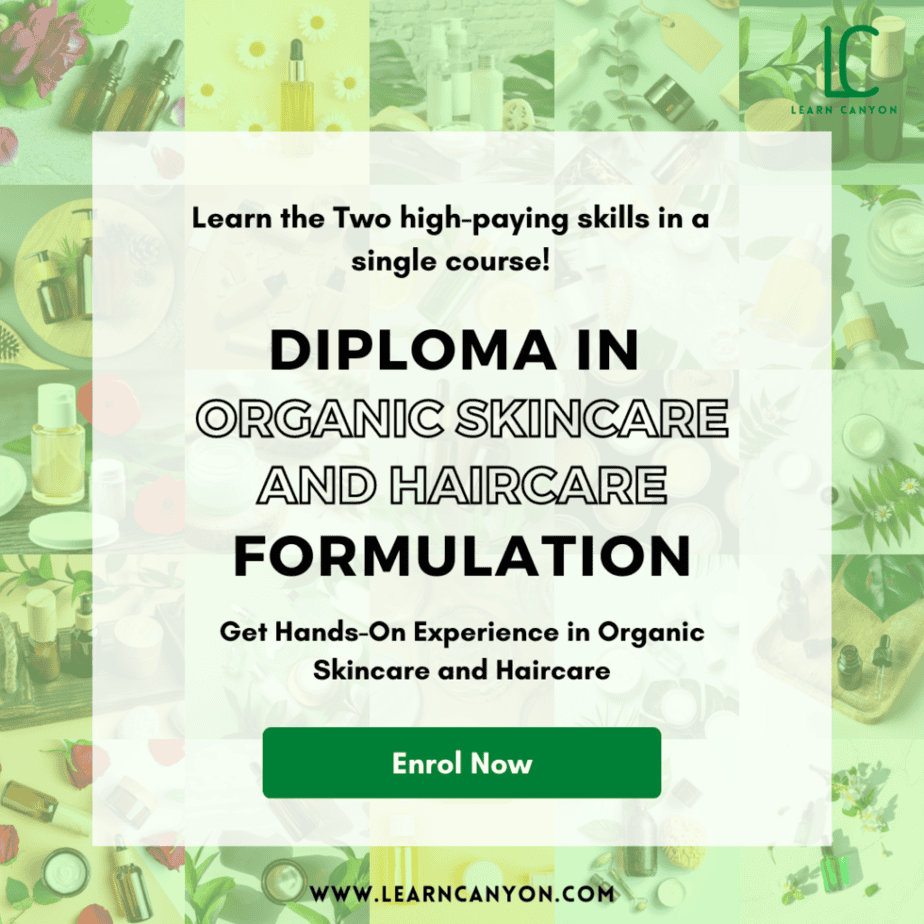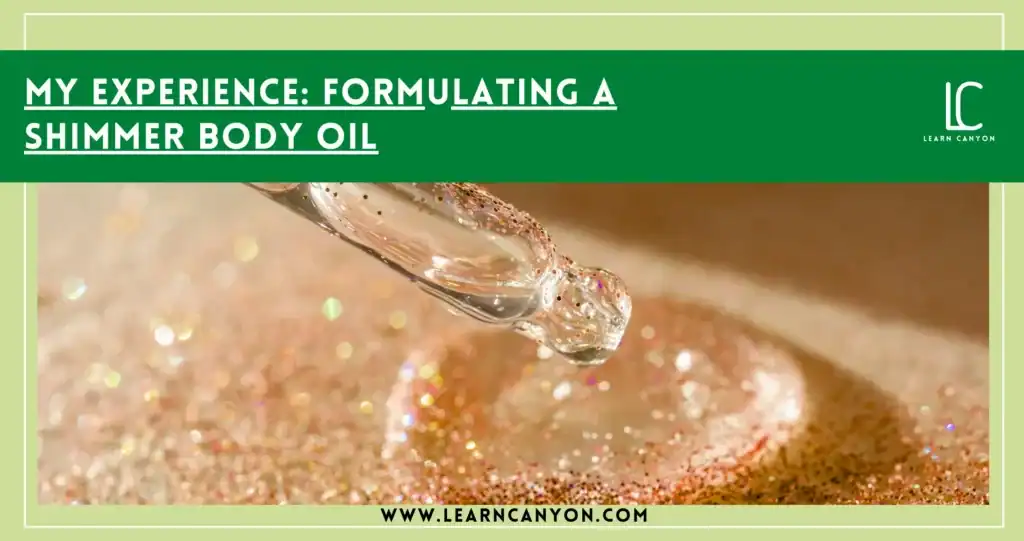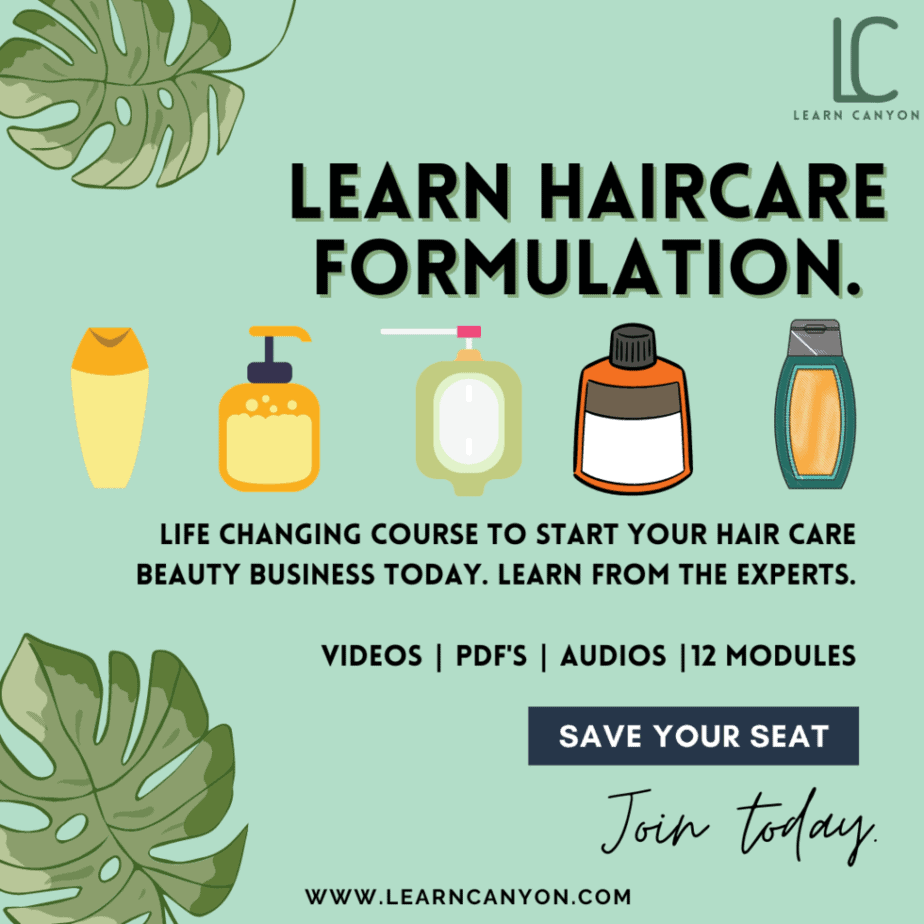Let’s be honest, there’s something incredibly soothing about a warm cup of herbal tea, right? But what if I told you that the same calming brew you sip on during a rainy evening can also work wonders for your skin?
As a professional formulator with a deep love for botanical skincare, I’ve always believed in the power of plants, and herbal teas are no exception. These gentle yet powerful infusions are brimming with skin-loving antioxidants, minerals, and phytochemicals that can soothe inflammation, brighten dullness, and even support the skin’s natural repair process.
Whether you’re crafting a hydrating toner, a calming gel, or a nourishing cream, herbal tea extracts can be a game-changer when used correctly. In this blog, we’ll explore how to incorporate herbal teas into effective skincare formulations, digging into which teas work best, how to extract them properly, formulation tips, and safety considerations you simply can’t skip.
So, grab your favorite mug (and maybe your lab notebook too), because we’re about to steep some serious skincare wisdom together!
Why Use Herbal Tea in Skincare?
Now, you might be wondering, why not just use extracts or essential oils? Why go through the process of brewing herbal teas for skincare?
Here’s the beauty of it: herbal teas are one of the gentlest yet most effective ways to infuse your formulation with botanical goodness, especially when you’re working with sensitive, reactive, or rosacea-prone skin types. These infusions are water-based, which means they’re ideal for toners, gels, creams, and emulsions where you want to harness the water-soluble benefits of herbs without overwhelming the skin.
Many herbal teas are naturally rich in polyphenols, flavonoids, tannins, and trace minerals, all of which offer antioxidant, anti-inflammatory, and skin-rejuvenating properties. Think green tea for oily, acne-prone skin… chamomile for calming redness… or hibiscus for that natural glow thanks to its gentle AHAs.
Another reason I personally love working with herbal teas? They carry the whole-plant energy. You’re not just isolating one compound, you’re giving skin a broader spectrum of nourishment, just like nature intended.
And of course, there’s something deeply therapeutic about formulating with teas. The scent, the process of steeping, the connection with plants, it makes the entire formulation journey feel intentional, grounded, and honestly… magical.
So yes, while powdered extracts and actives have their place, herbal tea infusions allow us to stay rooted in the art of formulation, while delivering real, visible results.
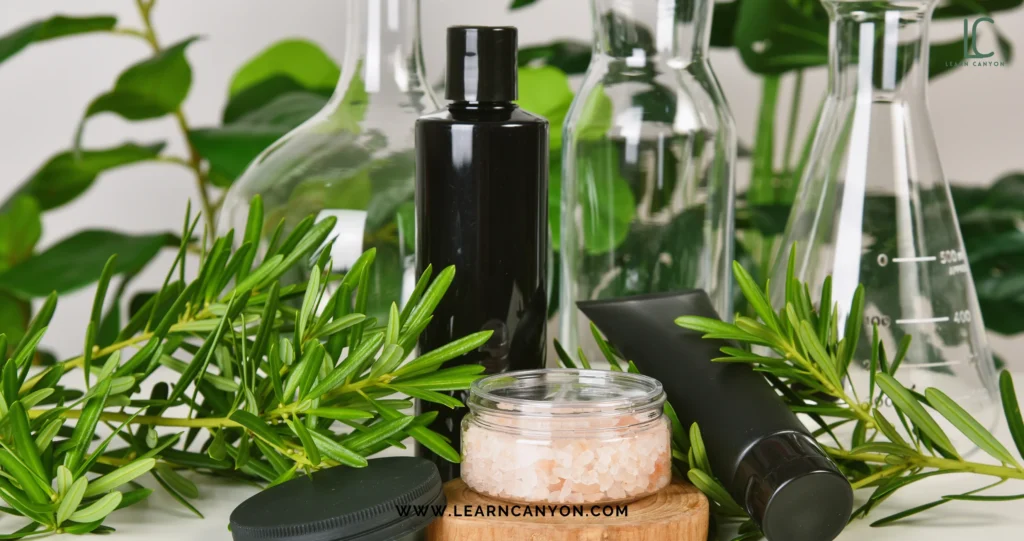
Popular Herbal Teas & Their Skin Benefits
Let’s dive into the fun part, choosing the right herbal tea for your formulation! Think of this as your botanical toolbox. Each herb has its own unique skin benefits, and once you understand them, you’ll start pairing them like a pro.
I always say, let the skin concern guide your tea selection. Need something anti-inflammatory? Calming? Rich in antioxidants? There’s a tea for that!
Here are some of my go-to herbal teas that I love incorporating into skincare products:
Green Tea (Camellia sinensis)
A formulator’s favorite! Packed with catechins and polyphenols, green tea is an antioxidant powerhouse. It helps fight free radicals, reduces redness, balances oily skin, and even supports anti-aging. Perfect for acne-prone or dull, tired skin.
Chamomile Tea (Matricaria chamomilla)
This one’s like a soft lullaby for the skin. Chamomile is beautifully soothing, anti-inflammatory, and calming, ideal for sensitive, irritated, or rosacea-prone skin. I love using it in toners, soothing gels, or even baby skincare.
Hibiscus Tea (Hibiscus sabdariffa)
Often called “nature’s Botox,” hibiscus is naturally rich in alpha-hydroxy acids (AHAs) and antioxidants that help with exfoliation, brightness, and skin firming. It gives a gorgeous pink hue too, bonus for natural color lovers!
Peppermint Tea (Mentha piperita)
Refreshing and clarifying! Peppermint tea has a gentle cooling effect, helps with excess oil, and offers light antimicrobial properties. It’s amazing in summer skincare, mists, and formulations for acne-prone skin.
Calendula Tea (Calendula officinalis)
Gentle, healing, and golden, calendula is known for its skin-repairing, anti-inflammatory, and antimicrobial properties. A lovely addition to creams, balms, and healing salves, especially for compromised or delicate skin.
Rooibos Tea (Aspalathus linearis)
A hidden gem! Rooibos is caffeine-free and rich in flavonoids, making it a great antioxidant tea. It’s gentle on sensitive skin and ideal for eczema-prone or dry, irritated skin.
Lavender Tea (Lavandula angustifolia)
Not just calming to the mind, lavender tea also has antiseptic and anti-inflammatory properties that can soothe irritated or acne-prone skin. Plus, the aroma? Divine.
You can steep these herbs solo or blend them to create a synergistic infusion that targets multiple skin concerns. I personally love blending chamomile and green tea together for a calming yet antioxidant-rich base.
Methods of Extracting Herbal Teas for Skincare
Alright, now that we know what herbs to use, let’s talk about how to actually extract their benefits effectively.
As a formulator, this step is crucial, because the way you extract your herbal teas can make or break the potency, safety, and stability of your final product.
There are different methods of extraction, and choosing the right one depends on the herb, its solubility profile, and what you’re formulating.

Let’s break them down!
1. Infusion (Steeping)
Think of this like making a classic cup of tea. This method is ideal for delicate parts of the plant, like flowers and leaves (e.g., chamomile, lavender, green tea).
How to do it:
– Use distilled water, bring it just below boiling (around 90°C), and pour over the dried herbs.
– Cover and let steep for 15–30 minutes.
– Strain with a sterile mesh or muslin cloth.
Use immediately or preserve properly (more on that later!).
Tip: Use a 1:10 ratio of herb to water for skincare use. So, 10g herb to 100ml water.
2. Decoction
This method is for tougher plant parts, roots, barks, or seeds (like licorice root or fenugreek). These need more coaxing to release their magic.
How to do it:
– Simmer herbs gently in water for 20–40 minutes (don’t boil aggressively!).
– Cool, strain, and use right away or preserve.
Decoctions are stronger and sometimes more therapeutic, but they may also have a shorter shelf life.
3. Glycerites (Glycerin Extracts)
Want a preservable, water-free option with a sweet, skin-loving twist? Enter glycerites.
Made with: Food-grade vegetable glycerin + dried herbs.
Ideal for: Serums, gels, and alcohol-free formulations for sensitive skin.
How to do it:
– Combine dried herbs and glycerin (or glycerin-water mix) in a 1:3 ratio.
– Let sit in a cool dark place for 2–4 weeks, shaking daily.
– Strain and store in a sterilized container.
Bonus: Glycerin is a humectant, so you’re hydrating and delivering plant goodness in one go!
4. Alcoholic Extracts (Tinctures)
If you need a potent extract with a long shelf life, alcohol is your best friend. Great for pulling out both water- and alcohol-soluble compounds.
How to do it:
– Combine herbs and ethanol (typically 40–60% alcohol) in a sterilized jar.
– Let it infuse for 2–6 weeks.
– Strain and use only in very low percentages in skincare (due to alcohol content).
Best for advanced formulators and products that tolerate a touch of alcohol (like spot treatments or aftershaves).
5. Hydrosols
While technically not “teas,” hydrosols are a steam-distilled version of herbal extracts, and they’re incredibly potent and stable.
Think of rose water, chamomile water, or lavender hydrosol. Perfect for mists, toners, and emulsions.
Use hydrosols when you want a preserved, ready-to-use, and aromatic water phase with skin benefits.
As a formulator, I often experiment with layering different extractions, like using a chamomile infusion as the water phase and a calendula glycerite as a humectant. The synergy is beautiful, and the results speak for themselves.
Formulation Tips for Using Herbal Tea Extracts
Okay, now comes the exciting part, actually working these beautiful brews into your formulations!
But before you pour your tea into a lotion base and call it a day (please don’t), there are a few formulator-approved tips you need to know.
I’ve made all the mistakes in my early days so you don’t have to!
1. Use Herbal Teas in the Water Phase
Since infusions and decoctions are water-based, they belong in the aqueous phase of your formulation. That means you’ll add them alongside your hydrosols, aloe vera juice, or plain distilled water during the heating phase (if needed).
If your formula is heat-sensitive, you can also add the tea as a cool-down phase ingredient, just make sure it’s preserved properly.
2. Keep the Ratios in Check
It’s tempting to use a lot because teas seem gentle, but using too much can destabilize your emulsion or introduce microbial risks.
A good starting point?
10–50% of your water phase can be an herbal tea infusion, depending on the herb, strength of the brew, and your formulation goal.
For example:
- Toners or gels → up to 50% infusion
- Emulsions → 10–30% infusion
- Masks (with water activation) → 100% infusion just before use
3. Always Preserve Your Formulation
I can’t stress this enough: herbal teas are fresh plant-based waters, which means bacteria love them.
Even if your final product looks fine, microbial growth could still be present.
- Use a broad-spectrum preservative like Geogard ECT, Liquid Germall Plus, or Leucidal Complete.
- Test your formulation’s pH, some preservatives only work within specific pH ranges.
- Always do a preservation efficacy test (PET) if it’s going to market.
4. Watch Out for Color & Scent Shifts
Herbal teas, especially hibiscus, rooibos, or green tea, may oxidize over time, which can affect the color and even scent of your product.
Tip: Add antioxidants like sodium phytate or Vitamin E (if oil is present), and package in opaque or UV-protective bottles.
5. Pair with Stabilizing Ingredients
Because teas are water-based and can thin out a formula, pairing them with natural thickeners or stabilizers like xanthan gum, guar gum, or hydrosols can help maintain texture and structure, especially in toners, gels, and emulsions.
6. Blend Teas with Intention
I always say, treat herbal teas like you would essential oils. Think synergy.
A calming chamomile + anti-aging green tea combo is divine for a night cream.
Or a hibiscus + rose blend in a face mist for summer radiance? Yes please!
Don’t just use them to sound “natural.” Use them to deliver function.
Formulating with herbal teas is one of my favorite ways to combine traditional plant wisdom with modern skincare science. When done right, these extracts don’t just sound beautiful, they perform beautifully, too.
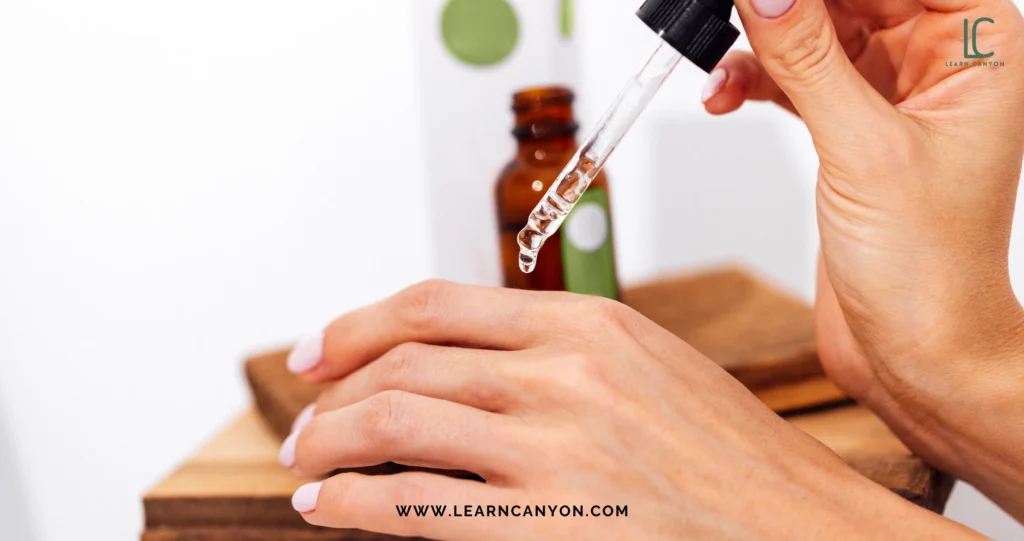
Sample Formulations Using Herbal Teas
Now that you know why and how to use herbal tea extracts, let’s make it all come to life with a few real-world examples. These are beginner-friendly, tested, and super versatile, you can tweak them as per your needs, skin types, or branding goals.
Trust me, once you start working with teas in your formulations, you’ll never look at that cup of chamomile the same way again.
1. Calming Chamomile + Green Tea Toner (Alcohol-Free)
Perfect for: Sensitive, acne-prone, or inflamed skin
Skin benefits: Soothing, antioxidant, redness-reducing
Phase A – Water Phase
- Chamomile tea infusion – 40%
- Green tea infusion – 40%
- Glycerin – 4%
- Panthenol (Provitamin B5) – 2%
- Sodium PCA – 2%
Phase B – Cool Down
- Preservative (e.g., Liquid Germall Plus) – 1%
- Allantoin – 1%
- Optional: Lavender hydrosol – 10% (replaces part of water phase)
Instructions: Brew both teas (1:10 herb to water ratio), strain, and cool. Combine Phase A ingredients, then add cool-down ingredients. Bottle in a spray or pump bottle and store in the fridge for extra freshness.
2. Hibiscus Glow Gel
Perfect for: Dull or uneven skin tone
Skin benefits: Brightening, gentle exfoliation, hydration
Phase A – Water Phase
- Hibiscus tea (cooled infusion) – 60%
- Aloe vera juice – 25%
Phase B – Thickener &
- Vegetable glycerin – 5%
- Sodium hyaluronate (1% solution) – 7.5%
- Xanthan gum – 1%
Phase C: Preservative
- Preservative (Geogard or Euxyl) – 1%
- Optional: Rose absolute (in solubilizer) – 0.5%
Instructions: Bloom xanthan gum in glycerin, slowly add hibiscus tea + aloe. Mix until gel consistency forms, then add the rest of the ingredients. Store in an airless pump.
This one makes a lovely post-sun gel or even a gentle overnight brightening treatment.
3. Soothing Clay Mask Activated with Calendula Tea
Perfect for: Irritated, eczema-prone, or dry skin
Skin benefits: Healing, calming, anti-inflammatory
Dry Mask Blend (to be activated fresh):
- White kaolin clay – 50%
- Colloidal oatmeal – 20%
- Aloe vera powder – 10%
- Chamomile flower powder – 10%
- Marshmallow root powder – 10%
Tea Activation Suggestion:
- Calendula tea (freshly brewed and cooled) – enough to form a paste
Instructions: Mix the dry powder in a jar and instruct users to mix 1 tsp powder with 2 tsp calendula tea when ready to use. Apply for 10 minutes and rinse. Great for a spa-like treatment at home!
These formulations are gentle, effective, and beautifully infused with plant power. Whether you’re creating your own product line or just want to experiment in your formulation lab, these tea-based recipes are a beautiful place to start.
And remember, you can always swap out the herbal teas based on what your skin (or your customers’ skin) needs.
Preservation and Shelf Life
Alright, friend, this is the non-negotiable part of formulating with herbal teas. I know we all love that fresh, natural, earthy vibe, but here’s the truth:
herbal teas are a dream for the skin… and a buffet for microbes if not preserved properly.
Let me walk you through how to keep your tea-infused products both safe and stable, without compromising on the plant magic.
Why You Must Preserve Herbal Teas
Teas are water-based and full of organic matter, aka the perfect breeding ground for bacteria, yeast, and mold. Even if your formula looks and smells fine, microbial contamination can still be lurking, and that’s a huge no-no, especially if you’re sharing your creations with others or planning to sell.
So, whether you’re making a mist, gel, toner, or emulsion with herbal tea as your base, you must use a broad-spectrum preservative.
Choosing the Right Preservative
Here are a few options I trust and often use:
- Liquid Germall Plus – Low usage rate (0.5–1%), effective and versatile
- Geogard ECT – EcoCert approved, gentle, works best between pH 3–8
- Euxyl PE 9010 – Broad-spectrum and good for natural formulations
- Leucidal Complete – Natural option, though you may need to combine it with a booster for full efficacy
Pro tip: Always double-check your preservative’s pH range and compatibility with your ingredients.
pH Testing is Your Best Friend
After formulating, always check the pH of your product. Herbal teas can shift the pH depending on the herb, hibiscus, for instance, is naturally acidic.
- Use a pH meter or pH strips to get an accurate reading
- Adjust with citric acid or sodium bicarbonate if needed
- Make sure your preservative is still effective within that pH range
How Long Will It Last?
Let’s talk shelf life! Here’s a general guideline:
| Formulation Type | With Preservative | Without Preservative |
| Herbal Tea Infusion (by itself) | 5–7 days (refrigerated) | 1–2 days max |
| Toners/Gels with Preservative | 3–6 months (room temp) | Unsafe |
| Emulsions with Herbal Teas | 6–12 months | Unsafe |
| Glycerites or Tinctures | 12–24 months (cool, dark place) | Depends on water content |
If you’re formulating for personal use and skipping preservatives, always refrigerate and use within a few days. Otherwise, play it safe and preserve properly.
Packaging Matters Too
Store your herbal-tea-based products in:
- Airless pumps or dark glass bottles to reduce light and air exposure
- Sterilized containers, always! (Don’t skip this part, even for DIY use)
This helps prolong the product’s shelf life and prevents oxidation or spoilage.
Formulating with herbal teas is deeply rewarding, but safety should always be part of the ritual. Once you’ve preserved it properly, you can share your creations with confidence, knowing they’re not just beautiful, but safe and stable, too.
Safety & Precautions
Alright, let’s put on our lab coats for a moment and talk about the serious side of formulating with herbal teas. I know, I know, it’s easy to assume that if something is natural, it’s automatically safe. But as a professional formulator, let me lovingly remind you:
“Natural” does not always mean “non-reactive.”
So before you dive headfirst into pouring every beautiful herbal infusion into your products, here are a few key things you need to keep in mind.
1. Watch for Plant Allergens
Some herbs, like chamomile (which is in the same family as ragweed), can trigger allergies in sensitive individuals. Others, like peppermint or rosemary, can be too stimulating for ultra-sensitive or broken skin.
Always check for botanical cross-reactions, especially if formulating for babies, pregnant women, or sensitive clients.
2. Patch Testing is a Must
Whether it’s a toner or a cream, always patch test your final product, even if it’s a small-batch DIY. And encourage your clients or customers to do the same.
Here’s a quick method:
- Apply a small amount behind the ear or inner elbow
- Wait 24 hours
- Check for redness, itching, or irritation
This step is easy to skip, but trust me, it builds trust and avoids unnecessary skin drama later.
3. Be Mindful of Concentration
Using very strong decoctions or infusions might feel like you’re boosting the benefits, but too much can overwhelm the skin or destabilize your product.
Start low (10–30%) and build up based on how your formulation performs over time and how skin reacts.
4. Know Your Herb’s Interactions
Some herbs don’t play well with actives like acids or enzymes. For example, hibiscus tea (rich in AHAs) may not pair well with exfoliating serums that already contain glycolic or lactic acid, it could tip the balance and irritate the skin.
- Do your compatibility research
- Check for any known contraindications
- Keep it simple when in doubt
5. Source High-Quality Herbs
Please don’t just grab old tea bags from the back of your kitchen drawer
For consistent, effective, and safe results:
- Use dried, organic herbs from reputable suppliers
- Avoid herbs with unknown storage conditions or added flavors
- Label and date your herbs and store them in airtight, cool, dark containers
Trust me, good herbs = better extracts = happier skin.
6. Stay Educated
Formulating with herbs is both a science and an art. And every herb has a story, its energetics, its chemistry, its traditional uses, and its cautions.
So, stay curious. Read. Take courses. Ask questions. And always test, tweak, and refine your formulations.
Formulating with herbal teas is a beautiful journey, but it becomes truly powerful when you pair your love for nature with professional-level safety and awareness.
And just like that, we’ve steeped our way through the beautiful world of herbal teas in skincare!
As a professional formulator (and a forever student of nature), I can tell you this, there’s something incredibly rewarding about working with herbs in their most humble form: as teas. You’re not just crafting skincare, you’re creating a connection… between plant and person, science and soul.
Whether you’re using chamomile to calm, hibiscus to glow, or green tea to protect, herbal teas offer a gentle, accessible, and deeply effective way to bring the magic of botanicals into your formulations. And when you use them with intention, paired with the right methods, preserved correctly, and blended with purpose, they elevate your creations to something truly special.
So I encourage you: start small, experiment mindfully, and let the plants teach you. There’s always more to learn, and that’s the beauty of formulation, it’s a dance between creativity and precision.
And hey, if this blog has sparked your curiosity, I’d love to invite you into our Learn Canyon community, where we don’t just learn the “how,” we dive into the “why” with passion, purpose, and plant power.
Until then, happy steeping and safe formulating!

